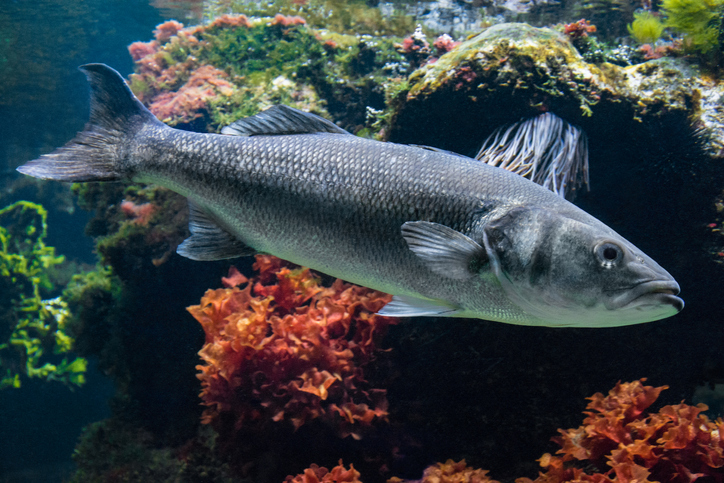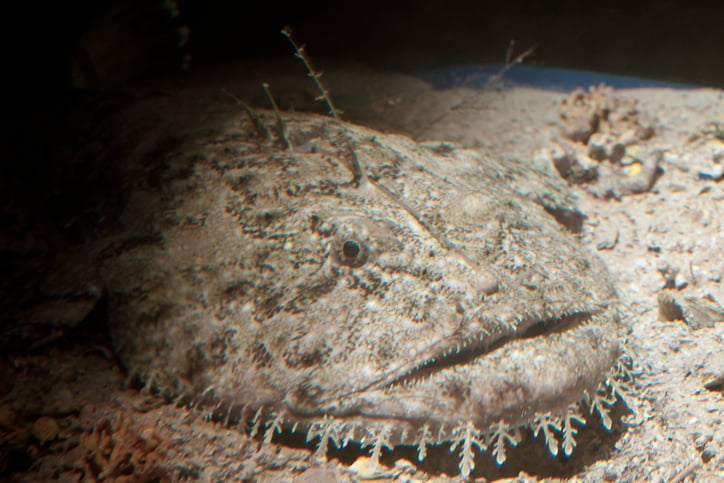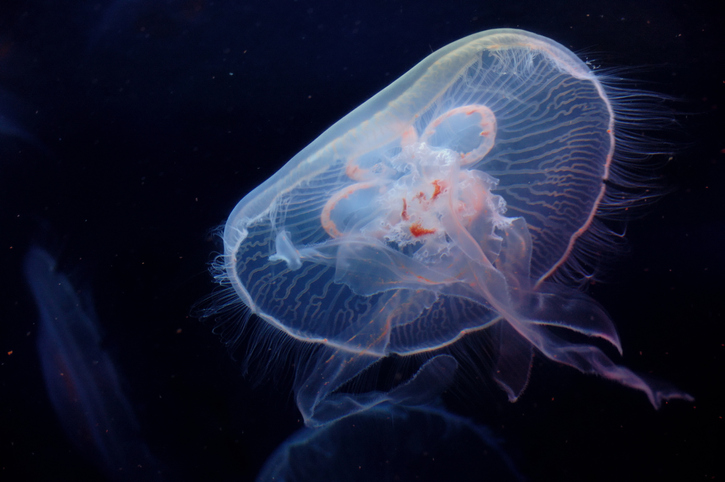Although the English Channel is on the smaller side compared to its neighbours, the diversity of creatures that call it home is not to underestimated. At just a little over one-tenth of the size of the North Sea, you’d probably expect it to have very little sea life going on. But that couldn’t be more wrong!
In fact, there’s a surprisingly large number of fish and other marine life living in this small stretch of sea. So which fish species live in the sea sandwiched between the northern coast of France and southern England? Let’s dive in and find out…
Types of fish in the English Channel
The shallow water of the English Channel is home to thousands of fish species and other sea creatures. Below, we’ll show you some of the main species living in this area sandwiched between England and France.
Seabass

We’re most likely to see the European seabass species flapping around in the channel waters during the warmer months since they head to deeper waters further south in the winter.
Although they’re quite plain-looking, you can identify them pretty easily from their large silver scales and their two fins. You might even be able to spot the sharp spiny rays in the front fin if you get a close enough look! They usually travel in schools when they’re younger, so if you see one, you’ll usually get to see a few.
European seabass can live up to 25 years, taking several years to reach full maturity in their lifecycles. Seabass are also extremely important for the food chain in coastal waters. They mostly feed on shrimp, molluscs, squid and other small fish.
Monkfish

Monkfish aren’t exactly the prettiest to look at. But as the saying goes, you should never judge a book by its cover! You might be surprised to know that monkfish are actually super rare around the world. In fact, the English Channel is one of very few areas they’ll live in.
Supposedly, they got their name because fishermen used to throw them back into the sea until they started giving the fish away to monks. Not only is it now a super popular seafood, but it’s also sometimes referred to as the poor man’s lobster!
Monkfish have such unique features and characteristics that it’s almost impossible to mistake them for a different type of fish. However, they usually stick to the sea floor and rarely come up to the surface, so you’re not likely to see one in the wild unless you’re snorkelling or diving!
Jellyfish

It’s super common to spot jellyfish in the shallowest waters around England’s southern coastline.
The southern coast of England is known to be home to several species of colourful jellyfish, including compass, moon and barrel jellyfish. Often known for having a nasty sting, these creatures are often spotted with vibrant colours, as well as being see-through and having a variety of patterns dotted across them. Of course, they’ll only sting if they’re trying to capture prey or are feeling threatened, so you don’t need to worry too much.
Their colours and patterns look most striking when they’re swimming around, so it’s worth looking out for them in the sea on your next visit to the beach.
Red Gurnard
The red gurnard is a difficult one to miss. As the name suggests, they’re bright red in colour which is why they gained the nickname sea robins. Although they have many defining features, the main one is their individual spiny fin rays on each side of their body. These rays act as fingers, which help the red gurnard search for food along the seafloor.
Another fun and slightly unusual fact about these fish is that they’re incredibly vocal. They’re known to make a croaking sound very similar to that of a frog!
You’ll see the red gurnard in the shallow waters around the UK, including in the English Channel. They’re benthic fish, which just means that they prefer hanging around on the seabed.
Seahorse
Two species of seahorse live in the waters surrounding the UK and, in particular, in the English Channel. The spiny and short snouted seahorses both take up residence in shallow, inshore waters amongst the rocks, mud and seagrasses.
The differences between the two are relatively self-explanatory. The short snouted seahorse has a shorter snout than the spiny seahorse, which is why it’s sometimes referred to as the long snouted seahorse. But the best way to tell them apart is by the spines on the head and back of the spiny seahorse. The names tell you everything you need to know, basically!
The breeding pattern of seahorses is unique compared to other sea creatures. First of all, the males will compete for a female before the water temperature starts to heat up in early spring. Once a bond is formed, this is reinforced every single day by an elaborate courtship dance. The pair will then stay together throughout the breeding season (early April until October). The most unusual part is that the female passes her egg to the male, who then self-fertilises the egg, grows and hatches it and finally, gives birth. Immediately after birth, seahorses are completely independent. They’re very self-sufficient!
Cuckoo Wrasse
Cuckoo wrasse is a species that thrives in cold saltwater environments, which is why they’re often found around the UK’s coasts and in the North Atlantic Ocean. These colourful fish prefer to live in rockier areas and algal zones, and you can also find them in shallow waters.
Trying to spot one? Look out for their colourful markings which vary depending on the sex of the fish. Females are an orange-pink shade dotted with black and white spots across their backs, while males are covered by electric blues stripes which run along their heads and backs, coupled with their striking orange fins and bodies.
The most interesting fact about this species is that they’re known as protogynous hermaphrodites. This means that they can switch from female to male as and when needed.
Sharks
There’s often a lot of debate about whether or not sharks live in the English Channel. And the answer is yes, they do! Sharks exist in large numbers within the Solent, which is part of the Channel found between the mainland coast of Hampshire, England and the northwestern coast of the Isle of Wight.
So, which species are most common in these waters?
The bull huss shark and the smooth hound shark are some of the more common species found in these shallow and colder waters. At only around 1.5m in length, these two sharks are on the smaller side compared to some of their relatives. They also both prefer a diet of crustaceans because of their smaller size – so no need to fear these sharks!
What other types of sea creatures live in the English Channel?
Of course, fish aren’t the only things living in the sea, and there are multiple other creatures in this body of water.
For example, bigger animals like seals, whales and dolphins are also known to swim around in the shallow waters of the Channel. So, if you’re ever on the southern coast of England or the northern coast of France, see if you can spot any of these bigger animals!
No sea area would be complete without seagrasses and algae, and there’s plenty of it in the English Channel too. Right down to the tiniest phytoplankton, these creatures help keep the rest of the ecosystem alive by producing all the nutrients they need to survive.
If you fancy diving deeper into the sea creatures living closer to home in UK waters, check out our map. Or you can leave the shores of the English Channel and move out into the wider ocean to discover the most unusual fish across the world!
